Step inside the eerie remnants of America's worst coal fires, toxic waste dumps, nuclear meltdowns, and more.
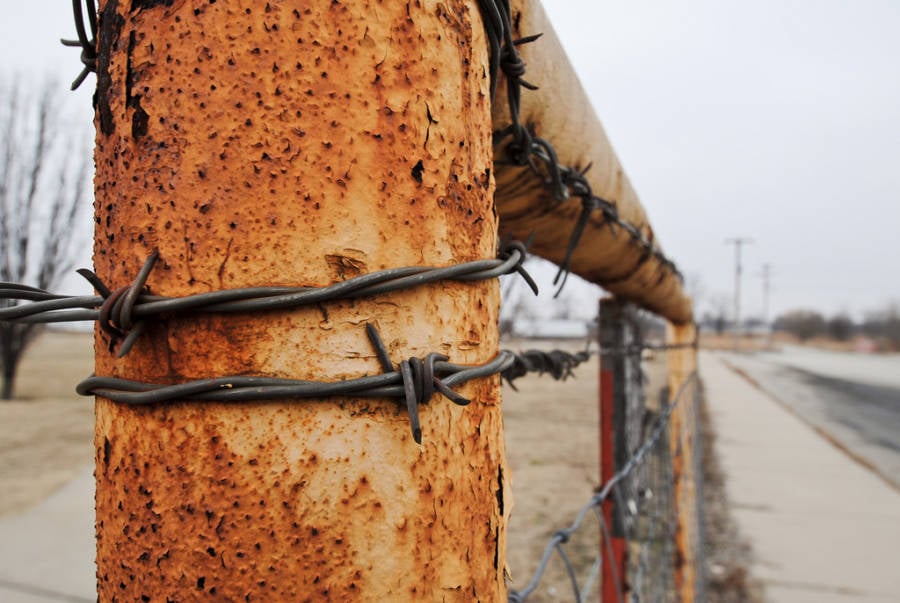
MRHSfan/Flickr
Economists have long said that pollution is a cost of growth. But what happens when pollution becomes an impediment — if not an end — to growth? The following ghost towns bring that question to light in a very real, if not haunting, way.
Centralia, Pennsylvania
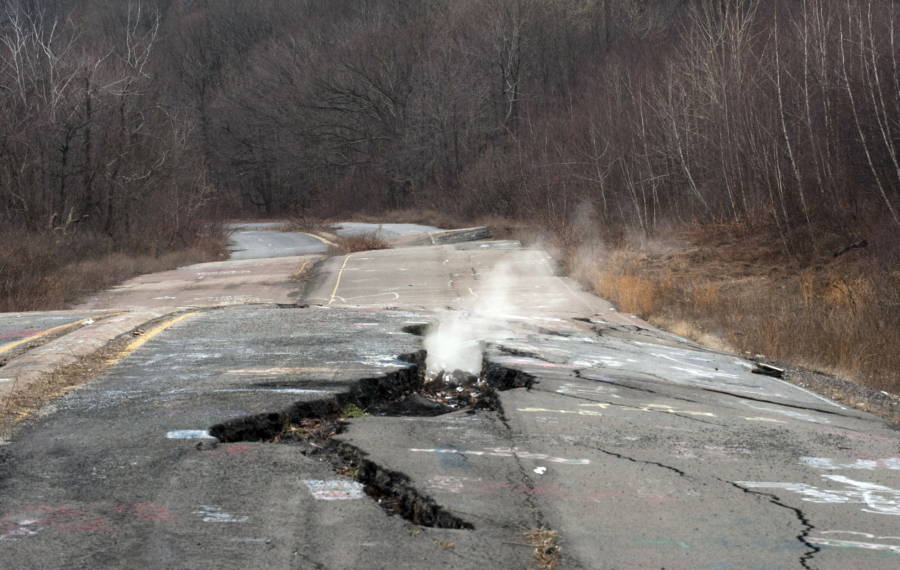
DON EMMERT/AFP/Getty ImagesSmoke rises from a large crack in PA Highway 61, caused by the underground coal fire in Centralia, on February 2, 2010.
A fiery coal mine has caused acrid smoke to rise from the depths of Centralia, Pennsylvania for half a century. Since 1980, the town’s population fell from 1,000 citizens to just eight.
As with so many struggling and all-but abandoned U.S. towns today, the coal business both made Centralia what it was and brought about its demise. The site’s supply of anthracite coal — a hard, high-carbon variety — drew in speculators in the late 19th century. By the early 20th century, nearly three thousand people called Centralia home.
Soon enough, demand for anthracite coal fell, the stock market crashed, and wars abroad gave Centralia residents a way out. Though most residents had abandoned the site by the mid 20th century, some mining persisted — and would usher in a fire that persists to this day.
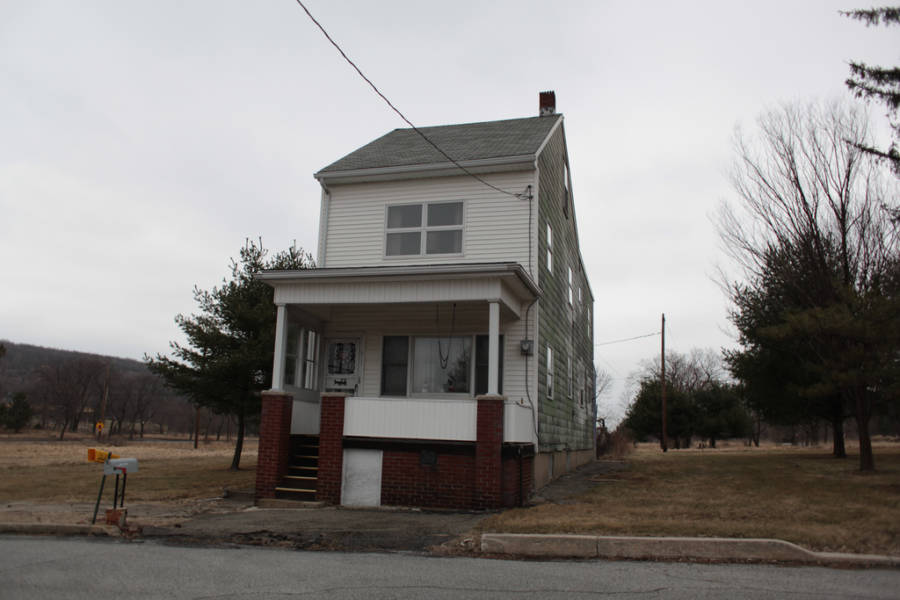
Kelly Michals/FlickrOne of the few remaining houses — once part of a row of homes — in Centralia.
While exact causes of the fire remain disputed, analysts agree that a 1962 fire tore through the town’s abandoned coal mines and has not yet stopped. Residents became aware of the fire decades later, and in 1984 Congress allocated more than $40 million to relocate Centralia residents — many of whom did not see the risk that the fires posed.
Then-governor Bob Casey condemned all Centralia estates in 1992, but backlash from Centralia citizens kept Centralia’s zip code alive until 2002.
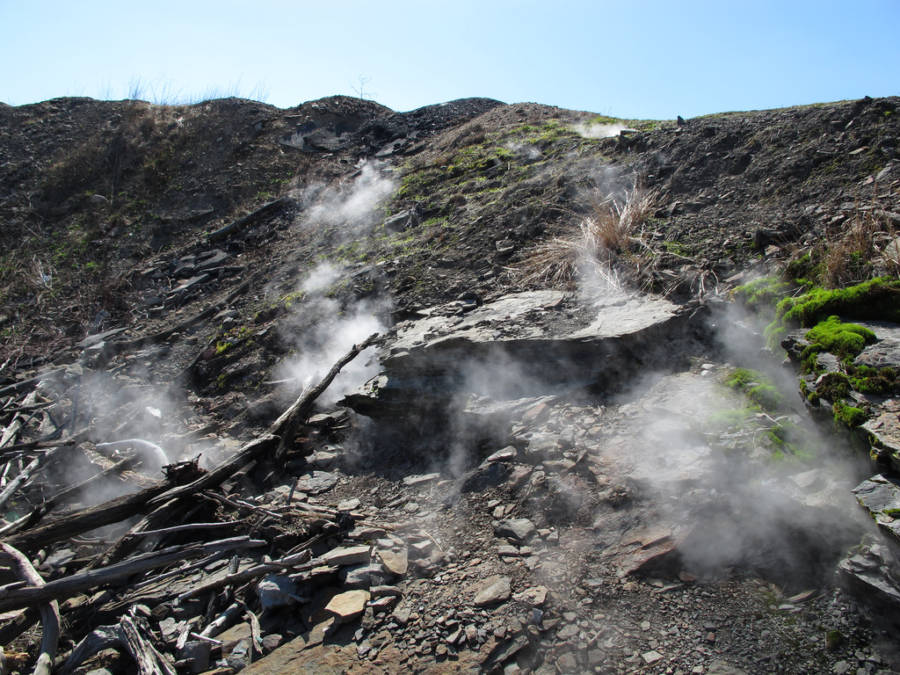
Kelly Michals/FlickrSmoke rises from the ground in Centralia.
Finally, state and local officials signed a 2013 agreement that allowed the town’s eight remaining residents to live out their lives there, on the condition that the town would be closed for good following their deaths.
Experts say that Centralia’s maze of coal mines contain enough fuel to keep it burning for another 250 years.
Butte, Montana
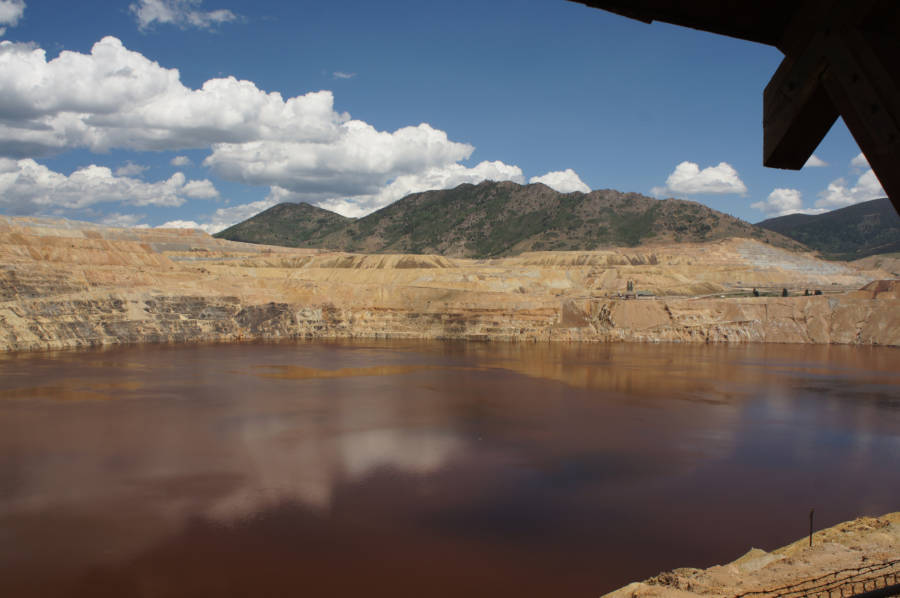
Tjflex2/FlickrThe toxic waters of the Berkeley Pit in 2013.
Butte, Montana is another fallen mining town. Unlike other sites on this list, Butte’s malaise is a product not of underground mining, but of surface mining.
Named after an earlier mine that eventually collapsed and swallowed several residential neighborhoods, Butte’s Berkeley Pit copper mine ceased activity in 1982. This meant that the pumps required to remove water from it were turned off indefinitely. Since then, water levels have risen, turning the Berkeley Pit into a sink that has now collected more than 40 billion gallons of contaminated run off.
The Superfund site has become a geological cauldron, and the water’s chemistry has changed so rapidly that it is impossible to track exactly how many or which chemicals the toxic brew is made of.
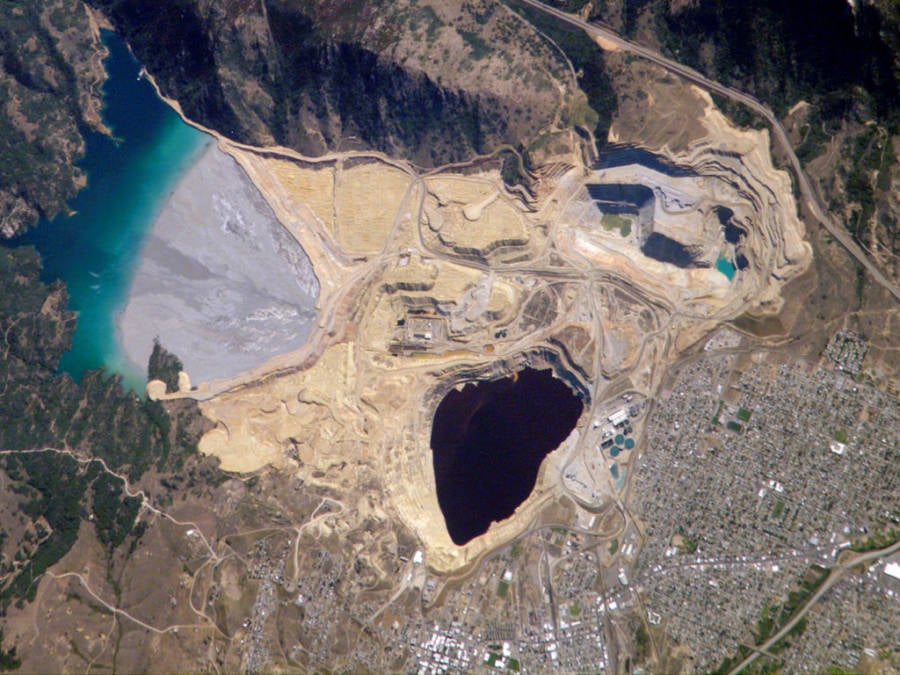
Wikimedia CommonsThe Berkeley Pit and surrounding area as seen from above in 2009.
While the site now draws in droves of visitors as a tourist attraction, life in the pit seems next to impossible. No fish, plants or even insects can survive near — let alone in — the cauldron, where acidity levels are presumed to be through the roof.
One creature seems to have endured, though: In 1995, researchers discovered an organism called Euglena mutabilis amid the toxic sludge. The protozoan has since spurred research into how microbes of their kind might lead to new ways of cleaning up such epic chemical disasters.
Picher, Oklahoma
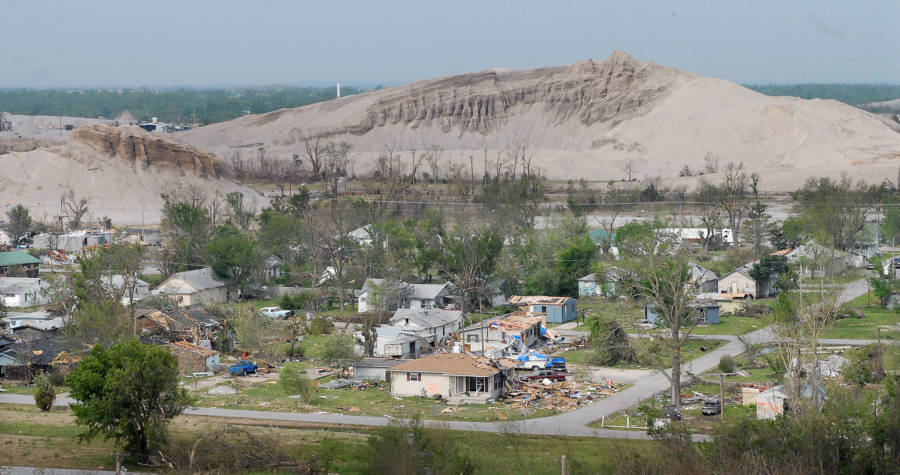
Brandi Simons/Getty ImagesHouses damaged by a tornado are seen in front of lead contaminated chat piles in Picher, Oklahoma on May 14, 2008.
Wired has described Picher, Oklahoma, as “America’s Mad Max Town” and Armageddon, USA.
Home to toxic tours and part of the notorious Tar Creek stretch of America, the town was built on top of hollowed mine shafts and tunnels which contained hazardous chemicals.
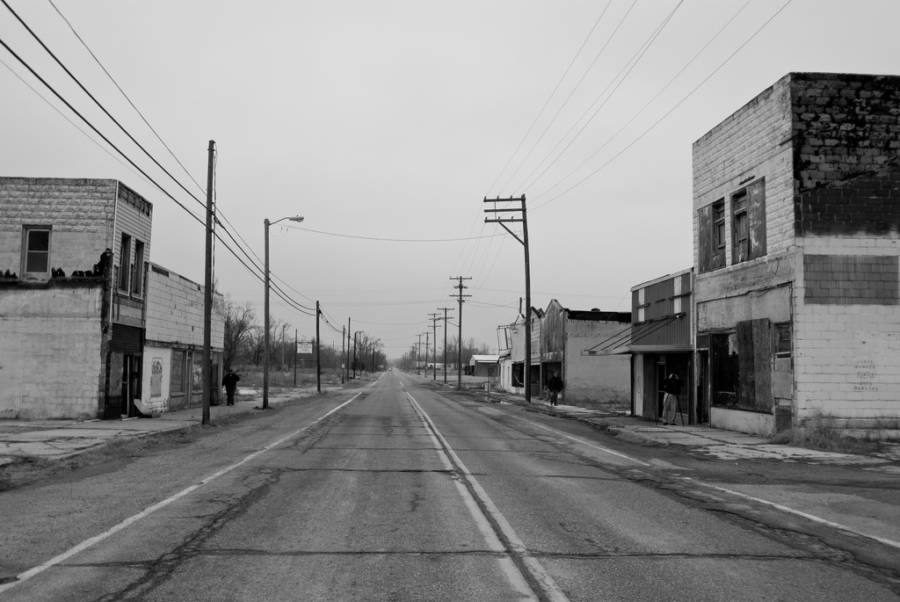
MRHSfan/FlickrPicher’s main drag in 2011.
At one point, Picher produced more than toxins, though. At the beginning of the 20th century, its mineral deposits provided metal for bullets.
Over time, however, demand for Picher metals fell off and the industry has since left piles of rock containing deadly heavy metals such as lead, zinc, and cadmium out in the open. The dust of these metals is so thick that it can literally be found on everything, including residents’ lungs.
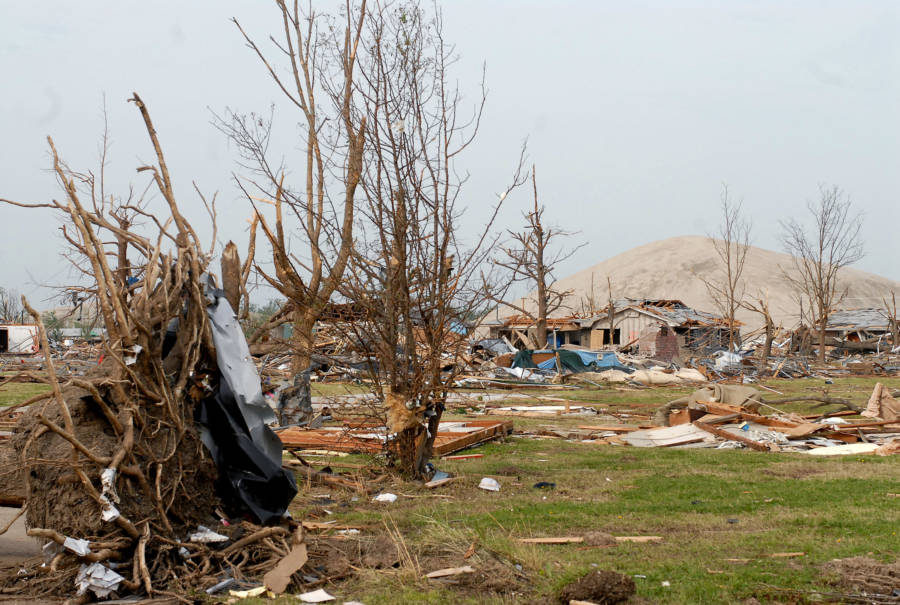
Brandi Simons/Getty ImagesPicher in 2008.
Mining companies are not contributing to the cleanup, since most have gone out of business. It doesn’t help matters that disagreements between the EPA and BIA (Bureau of Indian Affairs) — the latter of whom originally sold the tribal land to mining companies — have stalled any other cleanup efforts.
Although a plethora of videos can be found on YouTube of people exploring the now nearly abandoned town, some people continue to live and raise families in what’s nothing more than a toxic wasteland. Cancer rates are high, storefronts are boarded up, and 200-foot-high mounds of the carcinogenic minerals loom everywhere.
Three Mile Island, Pennsylvania
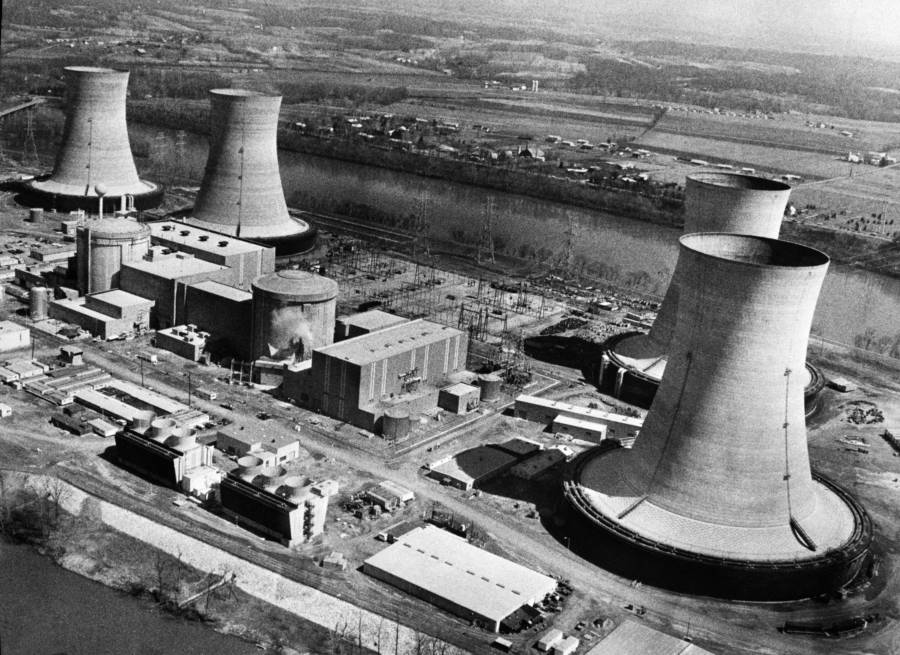
AFP/AFP/Getty ImagesThe Three Mile Island nuclear plant on March 28, 1979.
Three Mile Island is home to America’s worst nuclear power plant accident in history. On March 28, 1979, the plant’s Unit 2 reactor experienced a partial meltdown and released radioactive gases.
Official responses and communications with residents did not help abate concern. Authorities initially told citizens of nearby Middletown, Pennsylvania not to worry about the meltdown — only to change course over the proceeding days and urge residents to stay inside until a further investigation could be conducted. A few days later, officials ordered pregnant women and young children to evacuate the area without telling them when or if they could return home.
Then-president Jimmy Carter visited the increasingly panicked population in order to provide some semblance of comfort. This came too late: The event led to massive demonstrations, culminating in a final rally in New York City that attracted upwards of 200,000 protesters.
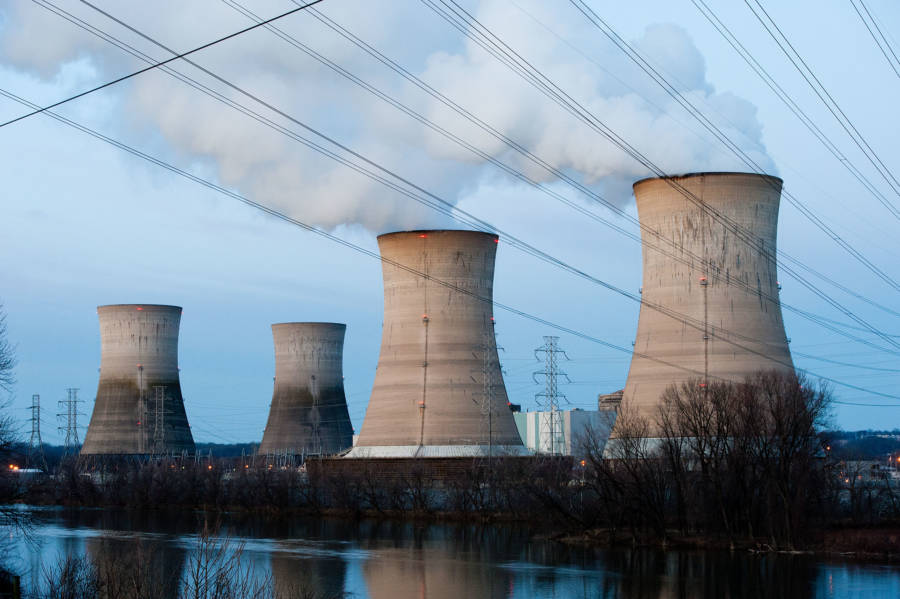
Jeff Fusco/Getty ImagesThe Three Mile Island nuclear plant on March 28, 2011.
Anti-nuclear activists and affected parties disputed authorities’ promises that the leaked radioactive gases wouldn’t cause permanent health damage, citing an increase in cancer rates and miscarriages following the event.
However, the Three Mile Island meltdown did lead to positive change in the United States.
Love Canal, New York
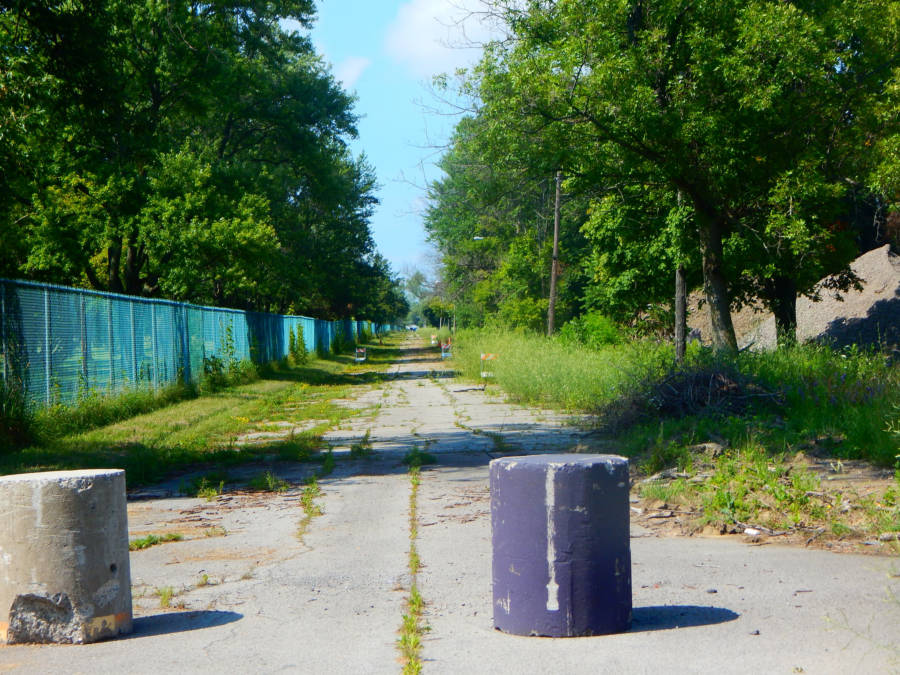
Adam Moss/FlickrLove Canal, 2015.
At one time, Love Canal was exactly the community its name makes it sound like. In fact, town namesake William T. Love hoped the spot would become “the most extensive and beautiful [park] in the world”.
But its foundations were faulty: Part of the town, located in Niagara Falls, was built directly over a kilometer-long pit that originally served as the local swimming hole or ice skating rink, depending on the season.
Furthermore, by the 1920s, the city of Niagara Falls had bought Love Canal and turned it into a for-profit chemical dump. At one point, the U.S. Army even used the area to dispose of chemical warfare refuse. Then, in 1947, Hooker Chemical bought the property, and by the 1950s 21,000 pounds of toxic waste filled the area.
Several layers of dirt ultimately covered the waste, and thus provided a platform on top of which playgrounds, homes, and schools would stand. As you might imagine, waste began to seep into residents’ basements, water supplies, and even the air, and it wasn’t long before Love Canal residents became sick.
After a community uproar in the 1970s, President Jimmy Carter deemed Love Canal a federal emergency area.
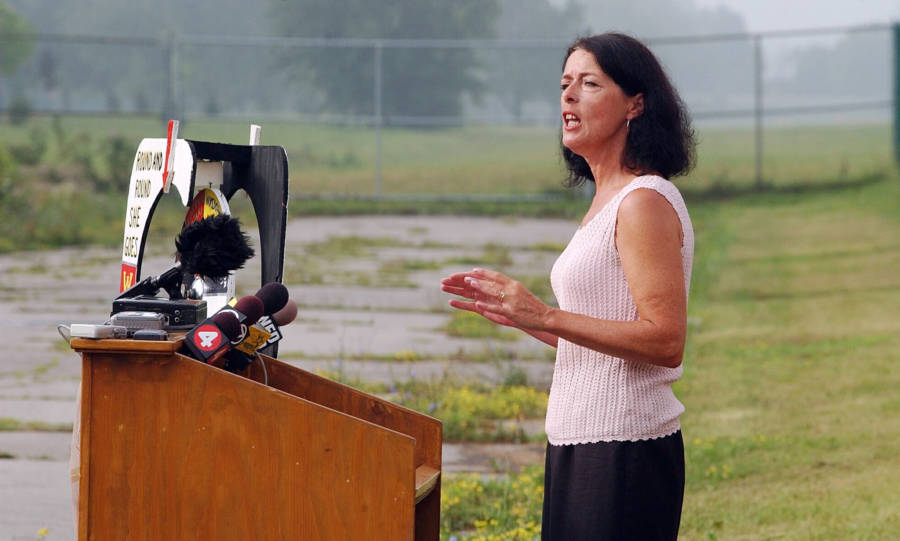
Harry Scull Jr./Getty ImagesLois Gibbs, a former resident and community leader, speaks at Love Canal on August 1, 2003 to commemorate the 25th anniversary of the emergency at the town’s toxic waste landfill.
The area underwent two massive cleanups but still poses a danger today. Indeed, cancer rates within housing developments built near or on the water site remain high: One citizen recently reported that at least 17 people in her immediate neighborhood had been diagnosed.
Next, have a look at four abandoned nuclear testing sites that humans destroyed far worse than Chernobyl. Then, step inside the most polluted city in the world.





